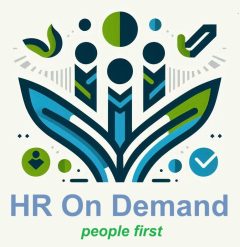Employee Engagement Tools: Inspiring and Empowering Teams
Employee engagement is more than just job satisfaction—it’s about cultivating a sense of commitment and connection to the organization. Engaged employees are motivated, productive, and more likely to stay loyal to your company. For small and medium-sized businesses, leveraging the right tools can amplify engagement and strengthen workplace culture. Below, we explore the key features and benefits of engagement tools, common challenges, and strategies for maximizing their impact.

1. Why Employee Engagement Matters
Engaged employees drive organizational success through higher levels of productivity, creativity, and collaboration.
Benefits of Employee Engagement:
- Improves overall workplace morale and satisfaction.
- Boosts productivity by fostering a sense of ownership and purpose.
- Reduces turnover and strengthens employee loyalty.
- Encourages teamwork and collaboration across departments.
2. Common Challenges in Employee Engagement
Maintaining high levels of engagement can be challenging, especially in remote or hybrid work environments.
| Challenge |
Impact on Engagement |
| Lack of Recognition |
Employees feel undervalued and unmotivated. |
| Poor Communication |
Misunderstandings lead to disengagement. |
| Limited Feedback Opportunities |
Employees feel disconnected from decision-making. |
| Inadequate Tools |
Existing resources may not effectively support engagement. |
Solutions:
- Implement regular recognition programs and initiatives.
- Use communication platforms to foster transparency and inclusivity.
- Provide opportunities for employees to share feedback and ideas.
3. Top Tools for Employee Engagement
From pulse surveys to wellness apps, there’s no shortage of tools designed to empower and engage employees.
Key Tools and Features:
1. Feedback and Survey Platforms: | Tool | Purpose | |—————————|————————————————-| | Officevibe | Collect employee feedback and measure engagement. | | SurveyMonkey | Create customizable surveys to capture insights. |
2. Recognition Tools: | Tool | Purpose | |—————————|————————————————-| | Bonusly | Celebrate achievements and foster peer-to-peer recognition. | | Kazoo | Recognize milestones and reward positive behaviors. |
3. Collaboration Tools: | Tool | Purpose | |—————————|————————————————-| | Slack | Foster open communication and collaboration. | | Microsoft Teams | Enable seamless teamwork and information-sharing. |
4. Wellness Apps: | Tool | Purpose | |—————————|————————————————-| | Calm | Promote mental health and relaxation practices. | | Fitbit | Encourage physical health and wellness tracking. |
5. Learning and Growth Tools: | Tool | Purpose | |—————————|————————————————-| | Udemy for Business | Offer self-paced learning opportunities. | | LinkedIn Learning | Enhance skill development with targeted courses. |
4. Strategies for Implementing Engagement Tools
To maximize their impact, HR must thoughtfully integrate engagement tools into the workplace.
Implementation Tips:
- Choose Tools That Align with Your Goals:
- Assess your team’s needs before selecting engagement platforms.
- Prioritize tools that fit your business size, industry, and budget.
- Educate Employees on Using Tools:
- Provide training sessions to ensure employees understand how to use engagement tools effectively.
- Create quick-start guides or tutorials for ease of use.
- Monitor and Iterate:
- Use engagement metrics to evaluate tool effectiveness.
- Gather employee feedback and adjust tools as needed.
5. Measuring Employee Engagement
To ensure engagement tools are delivering results, HR must track key metrics and continuously refine processes.
| Metric |
Purpose |
| Pulse Survey Scores |
Measure employee sentiment in real-time. |
| Retention Rates |
Track improvements in employee loyalty. |
| Productivity Metrics |
Assess the impact of engagement on performance. |
6. The Future of Employee Engagement Tools
As workplace dynamics evolve, so do the technologies that drive engagement.
Emerging Trends:
- AI-Driven Engagement Insights: Use predictive analytics to identify engagement challenges proactively.
- Gamification: Enhance motivation with game-based rewards and activities.
- Hybrid Work Solutions: Bridge the gap between remote and in-office teams with tailored tools.
- Personalized Wellness Programs: Tailor mental and physical health initiatives to individual preferences.


